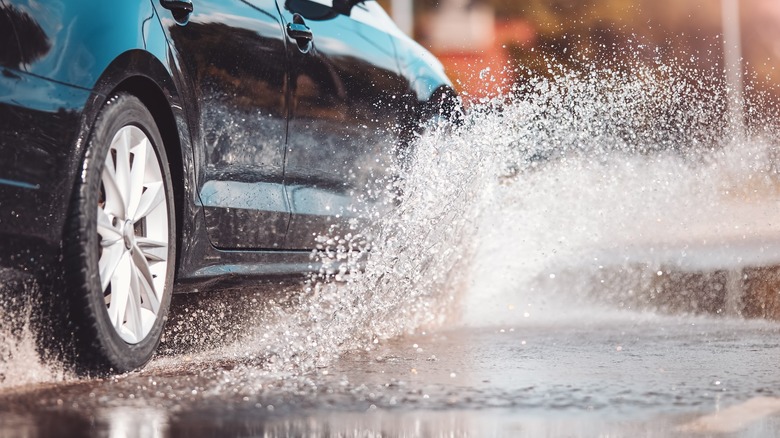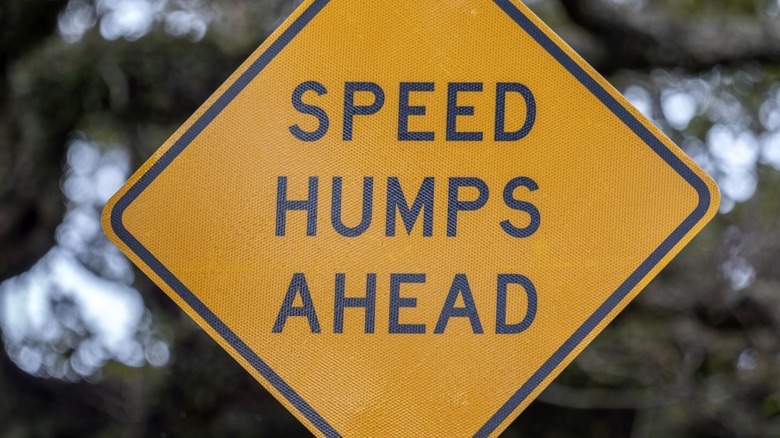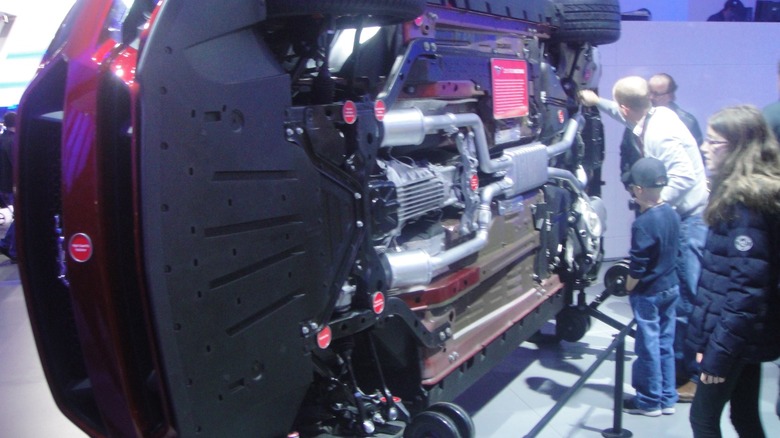What Is An Engine Splash Shield And Are They Easy To Install?
We drive our cars and trucks in every weather condition imaginable. In fact, the worse the conditions are, the more likely we are to drive if we need to go somewhere. Because, let's face it, few of us want to walk or bike even a short distance when it's raining or snowing. Inclement weather not only subjects our vehicles to water splashing off the roadway, it brings with it all sorts of debris, grime, and potentially harmful chemical residues such as motor oil or road salt meant to melt winter ice.
Cleaning your car's undercarriage is an important step to preventing the damage these conditions can cause, but your car's first line of defense against splashes is its splash shield. The splash shield lurks in the dark realm underneath your vehicle guarding your engine and suspension components from inadvertent splashes as you plough through puddles and slushy snow. While they seldom see the light of day, your splash shield deserves your occasional attention to ensure that it's up to the task of protecting your car.
How does an engine splash shield get damaged?
Some vehicles, especially those with all-wheel or four-wheel drive, use robust materials like steel or aluminum to protect the engine's lower components and at-risk suspension components. More often, car makers use relatively thin plastic, rubber, or metal designed to provide protection from splashing water and small road debris like gravel, sand, and leaves.
Your car's lightweight splash shields are easily damaged by hitting something on the road that's too tall to drive over, large gravel or rocks bouncing up as you drive, or getting too close to a parking lot bumper or curb. In addition, a mechanical failure such as a frayed serpentine belt or broken suspension component could damage your car's splash shield from the inside.
Fortunately, diagnosing the health of your splash shield is as easy as taking a peak underneath your car and only requires a flashlight at most. You don't even really need to know what you're looking at; just check for anything that appears broken, hangs suspiciously low, or flaps around when you push on it. Splash shields should be tucked up close to the bottom of the car and be somewhat aerodynamic. If you'd rather not lay under your vehicle, you can ask about the condition of your splash shield whenever you have your car serviced, but the technician will likely tell you if they spot a problem anyway.
Is a car's splash shield easy to replace?
The good news is that if you're an experienced DIY mechanic, replacing a damaged splash shield is a simple task that should only take a few minutes. Even if you're just starting out on your DIY education there are plenty of online apps that are perfect for beginner auto mechanics.
You may have noticed that we said replacing a damaged splash shield "should" only take a few minutes. There are some issues that potentially add time to the job. First, if your car sits low to the ground, you'll need to lift it up to access the splash shield. Follow your owner's manual for guidance on raising your car and use quality jack stands at the proper locations to ensure it doesn't fall on you.
Getting your car securely in the air will probably take longer than changing the splash shield, but rusted screws, debris-caked plastic clips, and damaged fastener heads can often present challenges and test your patience. Once the old splash shield is off, simply screw in the new splash shield and reattach any clips or push pin connectors. Having your damaged splash shield replaced by an automotive repair shop is another option; however, they'll likely charge a premium for the new splash shield and a minimum hourly rate even if it only takes a few minutes to replace.
[Featured image by Yahya S. via Wikimedia Commons | Cropped and scaled | CC BY 2.0]


